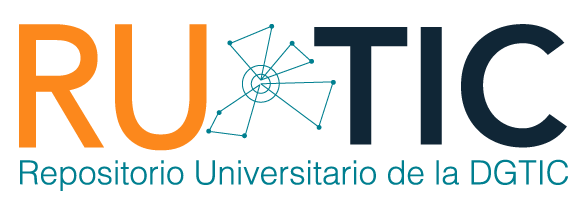| dc.contributor.editor | ERNESTO PRIANI SAISO | |
| dc.coverage.spatial | MX | |
| dc.date.accessioned | 2018-06-28T04:28:14Z | |
| dc.date.available | 2018-06-28T04:28:14Z | |
| dc.date.issued | 2006-04-10 | |
| dc.identifier.uri | https://ru.tic.unam.mx/handle/123456789/1061 | |
| dc.description | Artículos | |
| dc.description.abstract | De acuerdo con la Organización Mundial de la Salud (OMS), en los últimos años, el cáncer se ha definido como un problema mundial de salud pública. El objetivo primordial durante las etapas iniciales del cáncer es lograr la cura o remisión de la enfermedad, pero cuando la cura no es posible se considera válido un cambio de objetivo a fin de alcanzar un periodo terminal y un deceso confortable y tranquilo. Según la OMS del 30 al 50% de los pacientes con una neoplasia experimentan dolor debido principalmente a la falta de disponibilidad de analgésicos opioides o a su mala administración. Esto ocurre en una tercera parte de los individuos que reciben terapia antineoplásica, mientras que dos terceras partes de los sujetos con afección avanzada experimentan dolor intenso. Se calcula que el 25% de todos los pacientes con cáncer en el mundo mueren sin recibir tratamiento apropiado para el dolor. En 1982 la OMS y un panel de expertos establecieron un método asequible y fácil de aplicar para el tratamiento del dolor conocido como Escalera Analgésica. Este método se basa en el uso sistemático de agentes opioides, no opioides y adyuvantes administrados por horario de una manera dinámica. Con estas medidas se permite aliviar el dolor en un 85 a 90% de los pacientes. El restante se controla con manejos intervensionista, a los cuales algunos autores refieren como un cuarto escalón | es_MX |
| dc.description.abstract | In keeping with the World Organization for Health (WOH ) in the last years the cancer oneself she has defined such as an trouble global than health she publishes. The objective primordial in the stages initials of the cancer she is attain the cure or remission of the sickness but when the cure is no possible oneself sizable was worth a rate of exchange than objective in order to reach a periodontal terminal and a go down comfortably and restful. According to the WOH of the 30 at the 50% of the patients with a cancer experimented pain principally owing to the shortage than availability than analgesic opioides or at your mismanagement. It happens on a third part of the individuals than she receives therapy antineoplasic while second third parts of the liable with affection state-of-the-art experimenting pain intense. Oneself she calculates than the 25% than all the patients with cancer on the world dead without receive treatment suitable to the pain. On 1982 the WOH and a panel than skilled indicate a method obtainable and easy than apply to the treatment of the pain. Recognized sort of Stairway analgesic. This method oneself founded on the use systematic than reps opioides , no opioides and adjuvant administered through timetable , than one way dynamic. With this measures oneself she allows relieve the pain in the a 85 for 90% of the patients. The remnant oneself she controls with management interventionist , which several authors referent such as an quarter step | en |
| dc.format | html | |
| dc.format | application/pdf | |
| dc.format.extent | 104.5 kb | |
| dc.format.extent | 143 Kb | |
| dc.language | spa | |
| dc.publisher | Universidad Nacional Autónoma de México. Dirección General de Cómputo y de Tecnologías de Información y Comunicación. Revista Digital Universitaria | |
| dc.relation.isformatof | http://www.revista.unam.mx/vol.7/num4/art24/abr_art24.pdf | |
| dc.relation.ispartof | http://www.revista.unam.mx/index_abr06.html | |
| dc.rights | openAccess | |
| dc.source | Revista Digital Universitaria (1607 - 6079). Vol. 7, No.4 (2006) | |
| dc.subject | Cáncer | |
| dc.subject | Dolor | |
| dc.title | Tratamiento farmacológico del dolor por cáncer | es_MX |
| dc.title.alternative | Management of cancer pain | en |
| dc.type | article | en |
| dc.contributor.director | Alejandro Pisanty | |
| dc.subject.keywords | Dolor por cáncer, opioides, cáncer, dolor cancer pain, cancer, pain, opioid | |
| dc.identifier.url | http://www.revista.unam.mx/vol.7/num4/art24/int24.htm | |
| dc.creator | Gabriela Infante Cosío | |
| dc.rights.url | http://creativecommons.org/licenses/by-nc-sa/4.0 |
Files in this item
This item appears in the following Collection(s)
COMPARTE
BÚSQUEDA
Escriba el texto a buscar en DSpace
CONTACTO
El Repositorio Universitario de la DGTIC se edita en la Dirección General de Cómputo y
de Tecnologías de Información y Comunicación (DGTIC), de la Universidad Nacional Autónoma de México (UNAM)
Circuito Exterior s/n, Ciudad Universitaria, Coyoacán, C.P. 04510, México, D.F
Tel: +(52) (55) 56228166 Email: rutic@unam.mx









 ¿Qué es un repositorio...?
¿Qué es un repositorio...? ¿Qué beneficios obtengo...?
¿Qué beneficios obtengo...? ¿Qué tipo de recursos...?
¿Qué tipo de recursos...? Preguntas frecuentes
Preguntas frecuentes